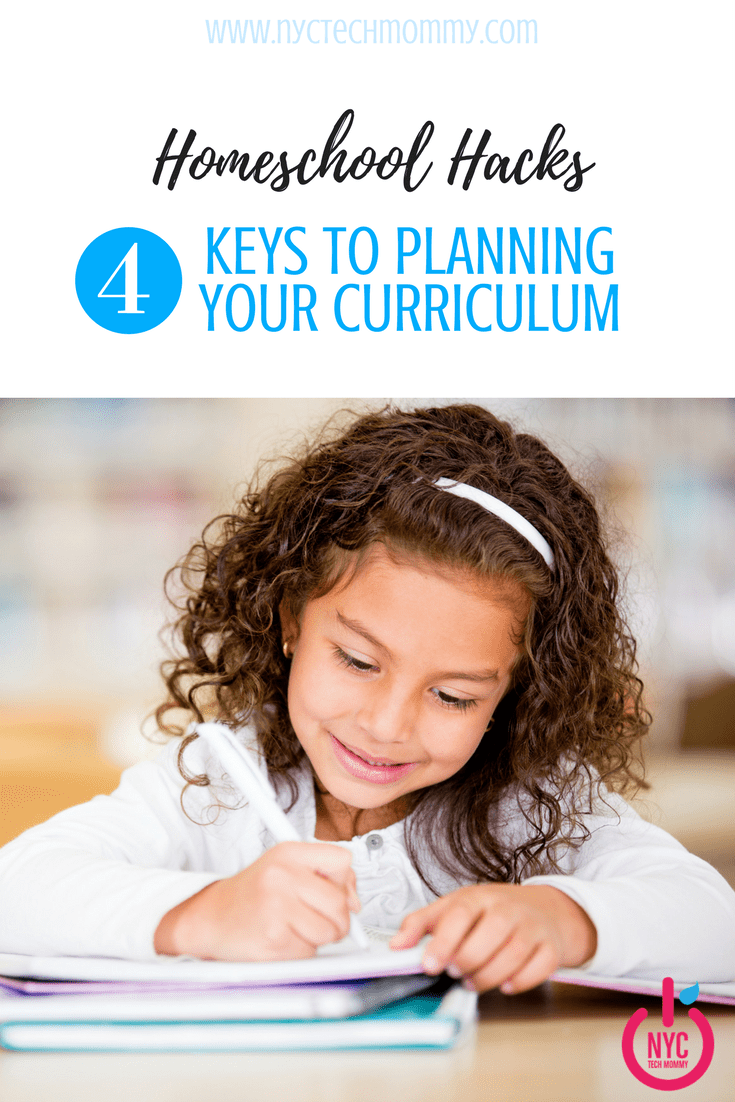
Homeschool Hacks: 4 Keys to Planning Your Curriculum
Homeschooling is the decision to take your child’s education entirely into your own hands, and that can feel overwhelming. Choosing the curriculum, making sure you comply with state laws and making sure your children are learning can seem like difficult tasks.
If you handle each one individually, and break them down into smaller chunks, they’re not so bad. Curriculum, perhaps the biggest part of homeschooling, is probably one of the easiest. Here are four keys to planning your curriculum.
This is a Guest Post by Anica Oaks

Planning Your Curriculum
Choose Your Curriculum Type
There are several types of homeschool curriculum: traditional (work/textbook, like in public schools), unit study (studying several subjects using one theme/topic), classical (working at the child’s cognitive development level), technological (computer or internet-based), and more.
Your first step to planning your curriculum is determining which one works best for your child. Research the options and consider your child. Does he have ADHD and doesn’t do well with bookwork? Does she prefer to do active work, like science experiments? Does he prefer sitting down with a book and not moving all day? These factors will help you decide what type of curriculum your child will enjoy the most and thus learn the most from.
Supplement with Additional Resources
Homework doesn’t really exist with homeschooling, since it’s all done at home. But often, you’ll find that your child could do with a little extra reinforcement on a particular subject, or that your chosen curriculum has a few gaps that you need to fill in. Finding supplemental resources that can either fill in gaps or be an entire curriculum for a particular subject all on their own will help ease your mind. Look for resource lists that provide explanations as to what the particular resource does (what subject it covers, what it’s called, and how it works/what it does), and that have been vetted by a source that you can trust.
Take Field Trips
Curriculum can teach a lot, but it’s important to remember that there’s more to education than just the “bookwork.” Look for field trips that can enrich the lessons your child is learning from their curriculum. If you’re learning about the Civil War, look for local reenactments that you can go watch, for example. If you’re studying farm-to-table nutrition for health, perhaps there’s a local farm that offers tours. Art museums, zoos, local factories, stores, restaurants, banks and more can all offer opportunities for additional learning that require little effort on your part beyond asking about and scheduling the field trip. In some cases, these may not be directly related to the curriculum, but instead teach life lessons that your child will need as adults. Make sure that you don’t overlook those opportunities.
Be Flexible
Above all else, no matter what choices you make with the above keys, being flexible may be the biggest and most important key. Homeschooling is often an experimental process as you learn what truly works for your child and your family. You may learn that your chosen curriculum isn’t the perfect fit you thought it would be. A supplemental resource may be available today and gone tomorrow, or a field trip may end up being canceled at the last second. Whatever happens, flexibility will help you get through it with grace and ease.
Homeschooling is an exciting, if somewhat enormous, journey. You will find that your child isn’t the only one learning on a daily basis as you try to navigate this adventure alongside them. Be patient with yourself as you learn the ropes and find your way, and enjoy the fun with your child. It’s worth it.
Guest Post by Anica Oaks

Anica is a professional content and copywriter from San Francisco, California. She loves dogs, the ocean, and anything outdoor-related. She was raised in a big family, so she’s used to putting things to a vote. Also, cartwheels are her specialty. You can connect with Anica here.
You May Also Like

How to Overcome the Struggles of Teaching Kids Math
December 13, 2017
How to Turn House Cleaning into a Workout – Infographic
April 4, 2018



